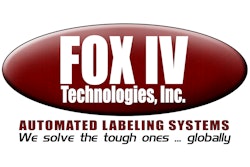The objective of the conference, according to PMMI president Chuck Yuska, was to provide information, ideas, and concepts useful in improving packaging line operations.
"Boosting packaging line productivity—What works?" was the title of the opening session, which was presented by Ben Miyares, vice president industry relations at PMMI. Miyares began the session by presenting the findings of the 2003 Packaging Productivity Trends Indicator Study. (For a copy of the study, contact Paula Feldman at [email protected] or 703/243-8555.)
Following his opening presentation, Miyares moderated a panel discussion with Mel Bahr, chairman MGS Machine Corp.; Richard Fox, president & CEO Fox IV Technologies; Bern McPheely, CEO, Hartness Intl.; and Barry Shoulders, president and CEO Packaging Technologies. The discussion covered a wide range of productivity-related topics. The following observations, delivered by the panelists, are not verbatim quotes but rather edited interpretations meant to capture the spirit of a fast-moving discussion.
CUSTOMER TRENDS
Shoulders: Factory Acceptance Tests are longer. The bar has been raised.
Bahr: Customers are as demanding as ever and their expectations are high. There is an upside to this. After all, if we know as precisely as possible what’s expected of us ahead of time, that’s better than hearing after an installation that a machine is not performing as expected.
Fox: Some customers are establishing prizes for teams of workers that raise productivity. The teams can be organized by shift or by packaging line. We think this can be effective.
Customer/supplier relationships are as important as ever. We suppliers should be viewed as a resource and tapped regularly.
Training is very important because it provides a sense of ownership at the plant level, which is critical. In addition to the training that follows an installation, there needs to be some commitment to ongoing training, as well. Sometimes it’s tough to get customers to buy into this notion. One customer even made it sound as if having operators and mechanics away in a classroom instead of on the line is automatically a bad thing.
MACHINES THAT ARE EASY TO OPERATE
Shoulders: Operator turnover has to be factored into any discussion of packaging line productivity. As vendors, we can minimize the negative impact of operator turnover by approaching the task of machinery building as more science than art. Simplify changeover wherever we can. Provide easy-to-follow help screens on the computer interface. Make machines that a guy off the street can come in and operate.
McPheely: We should think of a television set in building a packaging machine. Nobody understands what’s behind a television set or what makes it work. But when you turn it on, it’s on. This should be a goal for us as machine builders.
AUTOMATION
Bahr: Customers want to see fewer operators. Take an insert feeder, for example. Traditionally, an operator would fill its magazine with a fresh load of inserts whenever it was required. Now customers want that insert feeder to have racks of inserts that automatically move into place to replenish the magazine on demand. That frees up the operator to do more, thus requiring fewer operators overall.
MAINTENANCE NOW AND INTO THE FUTURE
McPheely: In measuring the longevity of a piece of packaging equipment, keep in mind that 24/7 operation is more prevalent these days. The longevity of a machine needs to be measured in operational hours more than number of years. Also, today’s packaging equipment is more electronic than ever, and that’s something of a curse as well as a blessing. The blessing is that through electronics, we are able to build machinery that is more flexible and versatile than ever before. The curse is that users of this new machinery will probably have to make some adjustments in their approach to maintenance. We suppliers can help by taking full advantage of new technology tools to prevent downtime. Delivering instant service via the Internet, for example, rather than asking a customer to wait for a service guy to arrive. These new tools will be increasingly important going forward.
Bahr: With all the talk of a new generation of machines where nothing but servo motors are used, I still think it’s important that machine builders only use servos where it makes sense. I also think we need to provide 24/7 service, and we need to make better data acquisition available to end users.
McPheely: Training has to be viewed as part of the maintenance picture, too.
Fox: Maintenance has changed as our equipment has grown more complex. The advantage of integrated circuits is that machines are operator-friendly and easy to change and so forth. But when there is a serious machine failure, things do get complex.
Shoulders: One idea we’ve heard discussed is that of shipping replacement parts along with a new machine that the customer only pays for when he uses them. That way, there’s no delay in ordering and shipping when a part is needed.
Mark Garvey (president of Garvey Corp.) from the audience: Our industry could behave like the airlines and build in redundancy everywhere. Something fails, replace it immediately. Or, even more aggressive, don’t wait for a failure. Replace it before it can fail. But do we as an industry want to be replacing machines that may have useful life left in them?
































